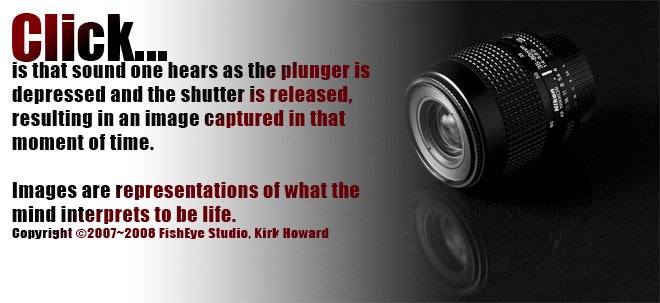After I got my new camera in 2006, I went through a series test to get the feel of the new digital SLR camera. One of my test was to test shoot on a cloudy beach day a series of 1/3 f/stop images with the same shutter speed of 1/60th of a second.
 What is an f/stop? Here is the simple explanation. Think of the aperture in the lens or camera like the iris in your eye, and it usually is located in your lens. The larger the opening the grater amount of light is allowed through the lens and into the camera. The larger your f/stop numbers the small the opening. The smaller the f/number the larger the opening.
What is an f/stop? Here is the simple explanation. Think of the aperture in the lens or camera like the iris in your eye, and it usually is located in your lens. The larger the opening the grater amount of light is allowed through the lens and into the camera. The larger your f/stop numbers the small the opening. The smaller the f/number the larger the opening.OK, I know that was like a Huh moment. Below are examples of an f/stop number scales you might find on a typical modern camera lens. Typical one-half-stop f-number scale: f/#2.8,3.4,4,4.8,5.6,6.7,8,9.5,11,13,16,19,22. Most of my Nikkor lenses use a typical one-third-stop f-number scale: f/#2.8,3.5,4,4.5,5.6,6.3,8,9,10,11,14,16,18,20,22.
Also when larger or small apertures are used this will affect the focal range and or Depth of Field. Depth of field increases with f-number. This means that photos taken with a low f-number will tend to have one subject in focus, with the rest of the image out of focus. This is frequently useful for nature photography or certain special effects.
The depth of field of an image produced at a given f-number is dependent on other parameters as well, including the focal length, the subject distance, and the format of the film or sensor used to capture the image. Smaller formats will have a deeper field than larger formats at the same f-number for the same distance of focus and same angle of view. Therefore, reduced-depth-of-field effects, like those shown here, will require smaller f-numbers (and thus more complex optics) than do larger format cameras.
If you have a true interest and you really want to get into the technical aspect of f/stops, go to Wikipedia. Wikipedia has a great article on this topic.


No comments:
Post a Comment